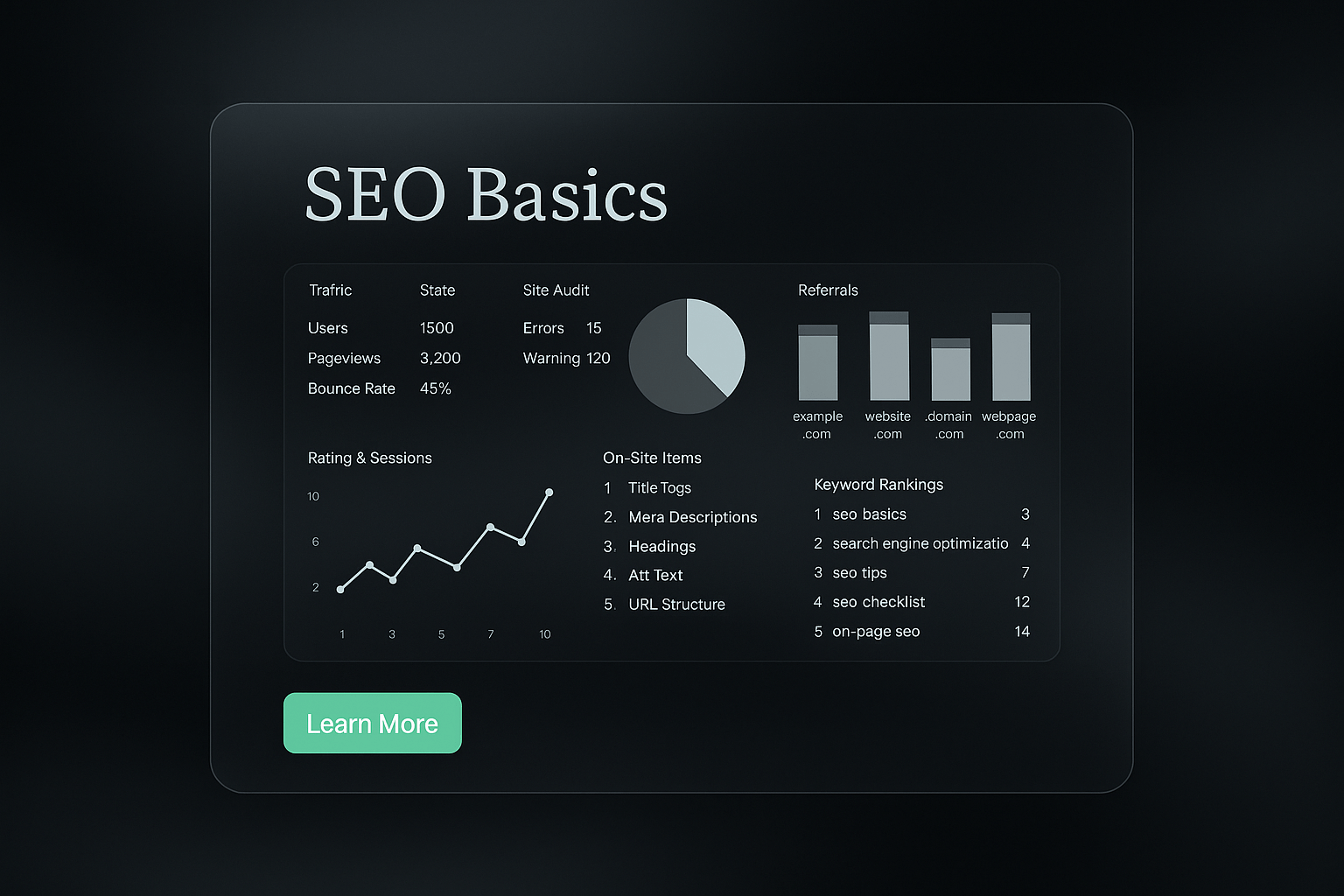7 Top Tips To Increase Web Traffic

Search engines shape how people find and access information online. They act as the primary gateway between users and websites, determining which pages appear when someone searches for specific topics. Understanding how search engines work is essential for growing website traffic.
Google dominates global search with 91.54% of all web searches as of December 2025. The platform saw 168.67 billion visits in 2025—far surpassing other major sites like YouTube. Optimizing for Google should be a priority for any website. For more details, check out the latest data from Reboot Online's Website Statistics.
Aligning With Search Algorithms While Maintaining Authenticity
Following search engine guidelines doesn’t mean compromising your website’s unique voice. The goal is to create content that satisfies search algorithms while providing real value to readers.
Key Ranking Factors and Common Misconceptions
Several factors influence search rankings, including relevant keywords, quality content, fast loading times, and mobile-friendly design. However, avoid outdated tactics like keyword stuffing, which can lower visibility. Learn the fundamentals in our Beginner’s Guide to SEO.
Strategies for Sustainable Traffic Growth
Building lasting website traffic requires consistent effort. Successful sites regularly analyze their performance metrics, stay updated with algorithm changes, and prioritize audience needs.
Consider expanding beyond search engines by leveraging email marketing and social media. A multi-channel approach ensures you’re not dependent on one traffic source.
Maximizing Local Search Potential

Optimizing for Location-Specific Searches
Using location-based keywords like "dentist in Seattle" or "Chinese food near downtown" helps businesses appear in relevant searches. Incorporate these keywords into content, meta descriptions, and image alt text.
The Power of Business Listings and Citations
Ensure your business information is consistent across all directories, including Google Business Profile, Yelp, and Bing Places.
Citations (mentions of your business on other sites) help boost local search authority.
Content Localization: Connecting With Your Community
Localized content can increase search traffic by 47%, visits by 70%, and conversion rates by 20%. Share community-related content to enhance local engagement. Learn more at DiviFlash.
Creating a Multi-Channel Traffic Strategy

Diversifying traffic sources ensures steady website growth.
Identifying and Optimizing Your Most Promising Traffic Sources
Use analytics to identify your highest-performing channels.
- Organic search contributes 39% of traffic.
- Direct visits account for 22%.
- Social media drives 16%.
- Email marketing contributes 14%.
- Paid search accounts for 9%.
More insights available at VWO.
Developing Channel-Specific Content That Converts
Tailor content for each platform:
- TikTok & Instagram → Short, engaging videos.
- LinkedIn & Blogs → In-depth articles and insights.
Optimizing Content for Maximum Engagement

Crafting Compelling Headlines
- Use numbers: "7 Proven Ways to Grow Traffic"
- Show clear value: "How to Double Search Rankings in 30 Days"
- Spark curiosity: "The Website Change That Boosted Traffic by 237%"
Meta Descriptions That Drive Clicks
Meta descriptions should preview the value and include keywords.
Engaging Body Content
Keep readers engaged with:
- Clear writing
- Relevant visuals
- Internal links
- Call-to-action questions
Leveraging Social Media for Sustainable Growth
Social media builds engaged audiences, not just traffic spikes.
Content Scheduling and Platform Optimization
Use a content calendar to post consistently. Optimize posts for each platform’s algorithm (e.g., hashtags on Instagram & Twitter).
Community Engagement for Meaningful Results
Actively respond to comments and encourage discussions.
Creating Shareable Content and Building Social Proof
Focus on creating helpful infographics, engaging videos, and practical tips that encourage sharing.
Measuring True Social Media ROI
Track results using Google Analytics. Focus on click-through rates and conversions, not just follower counts.
Technical Optimization for Better Performance

Page Speed: The Need for Speed
Websites should load in under two seconds. Use Google PageSpeed Insights to optimize performance.
Mobile Responsiveness: Meeting Modern Browsing Habits
Ensure a mobile-friendly experience, as Google prioritizes mobile indexing.
Identifying and Fixing Common Technical Issues
- Broken links: Use Screaming Frog.
- Duplicate content: Use canonical tags.
- Crawlability issues: Submit a sitemap via Google Search Console.
Ongoing Technical Optimization
Regularly audit site performance and adjust based on SEO updates.
Want your blog posts to actually get noticed?
With DeepRankAI, creating content that ranks well and brings in more traffic doesn’t have to be a grind. Our AI is tuned to help you write posts that connect with people and search engines—so your site gets the attention it deserves.
👉 Check out DeepRankAI and see how it can make content creation a whole lot easier.


